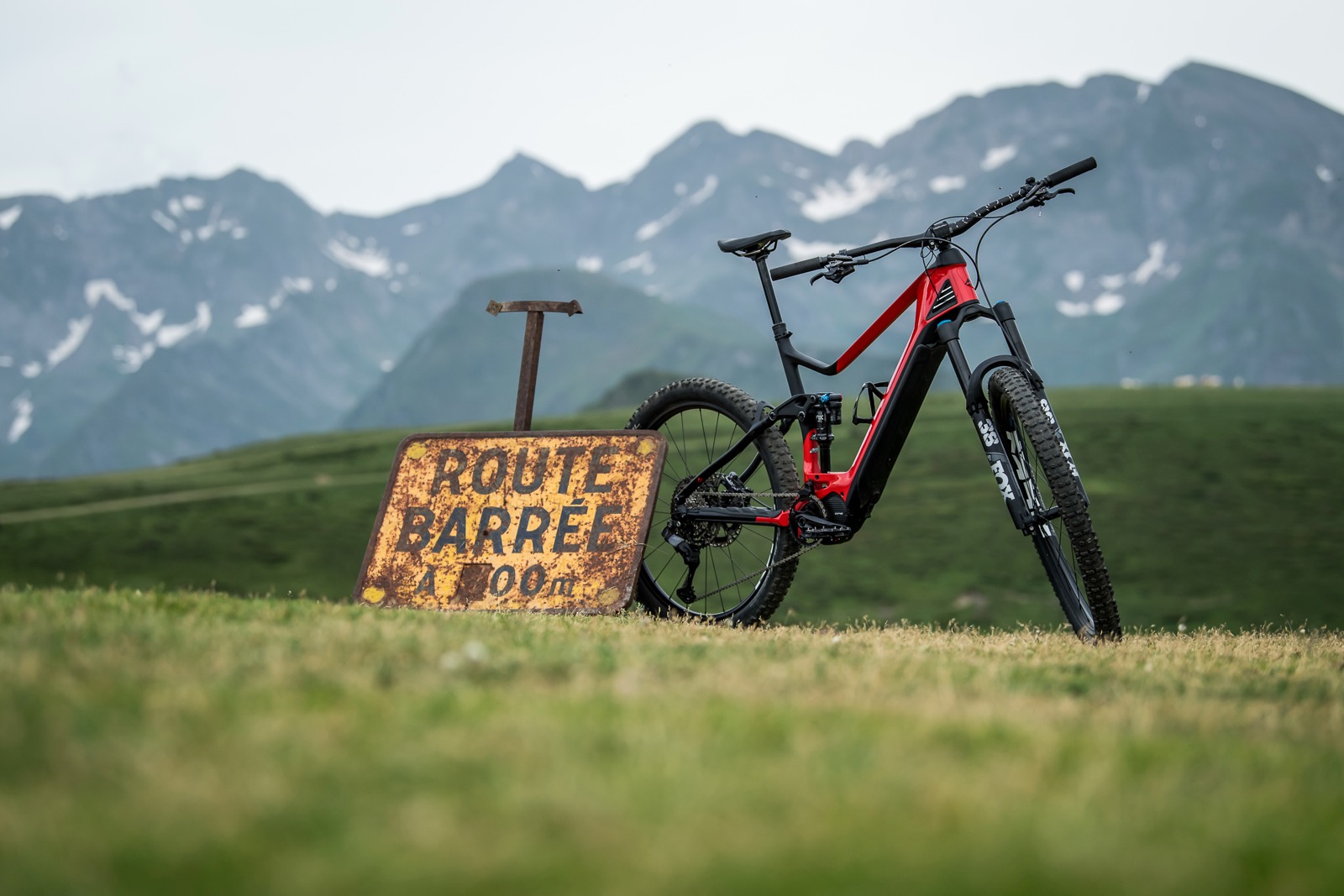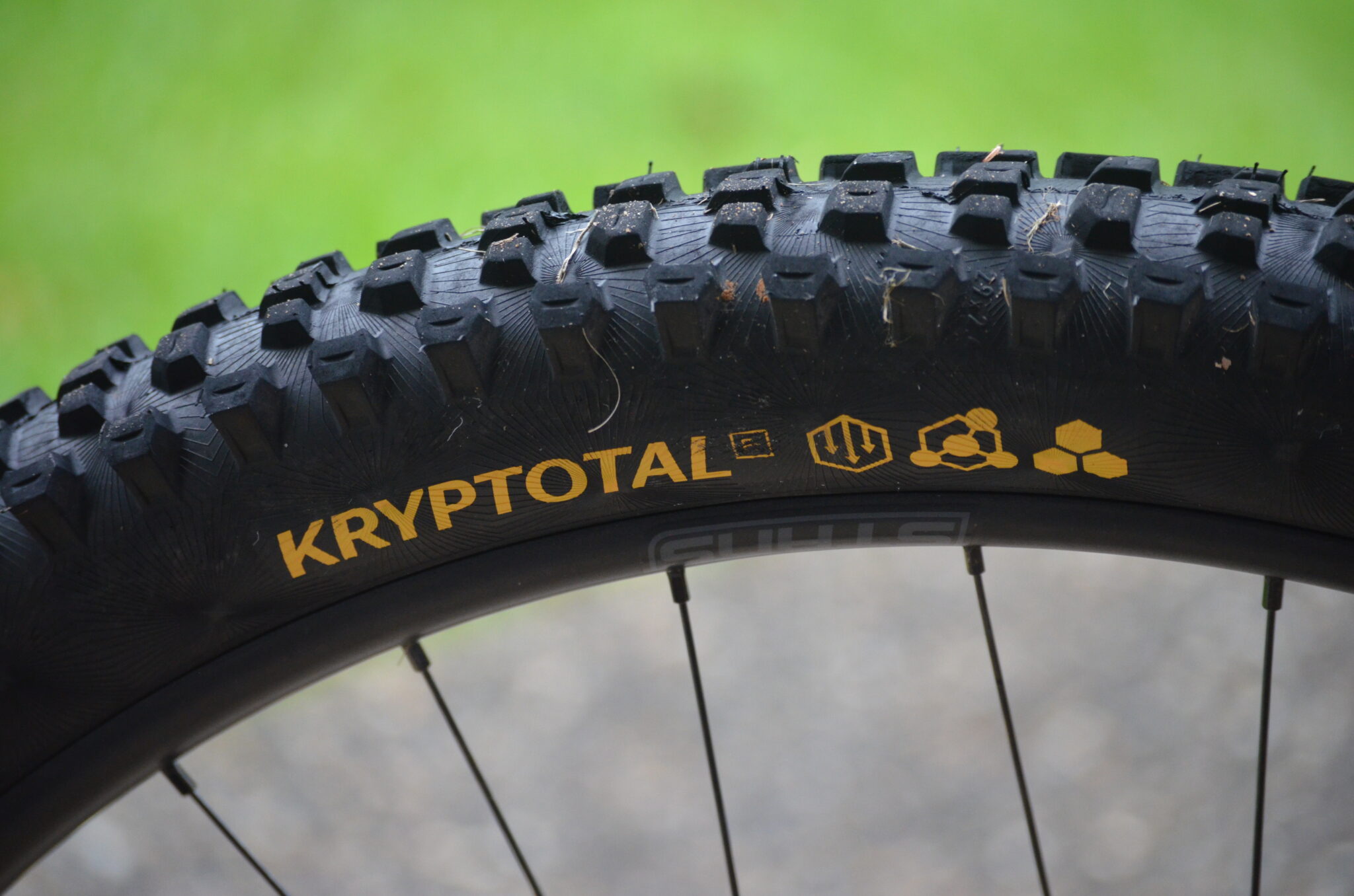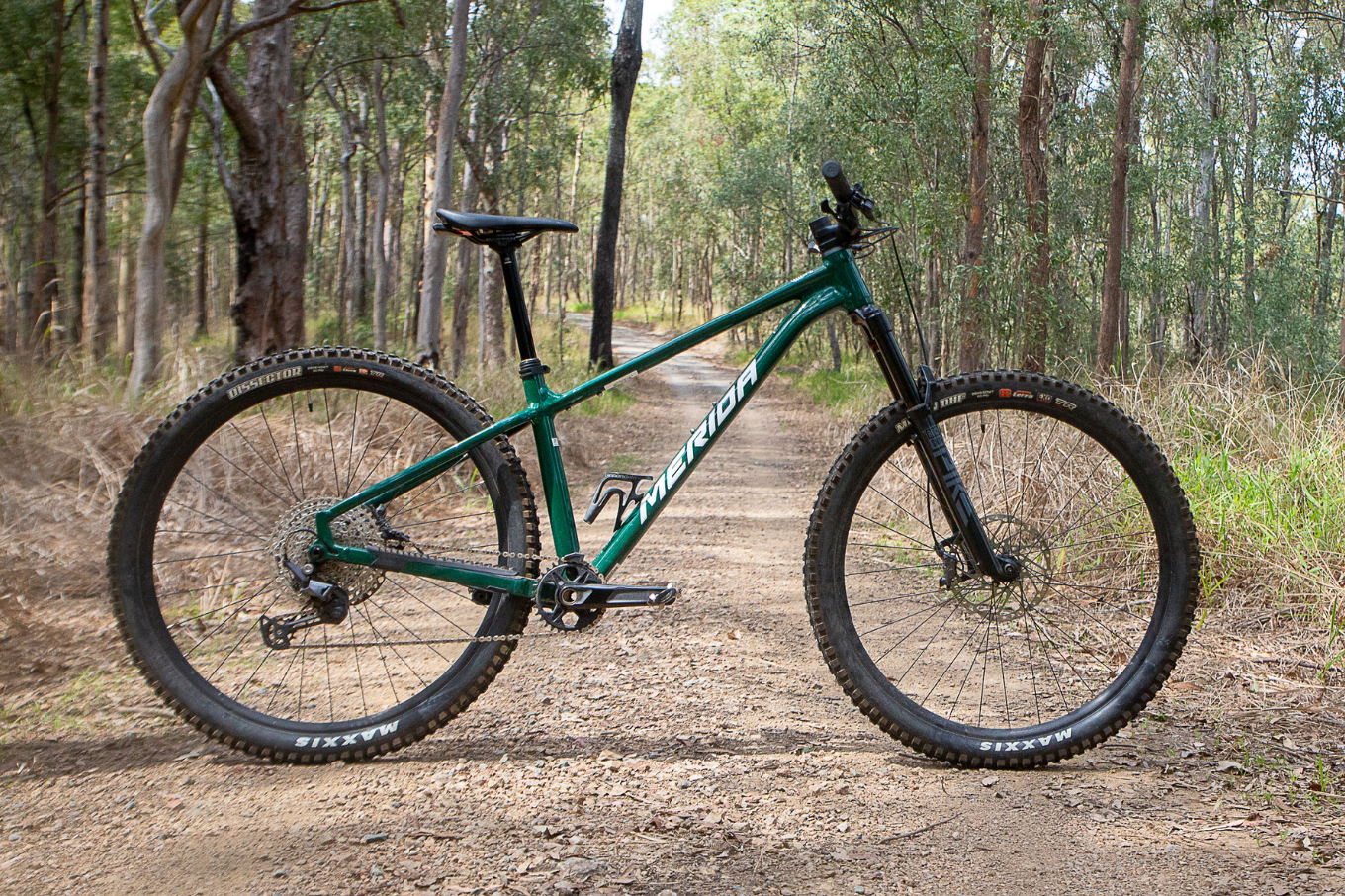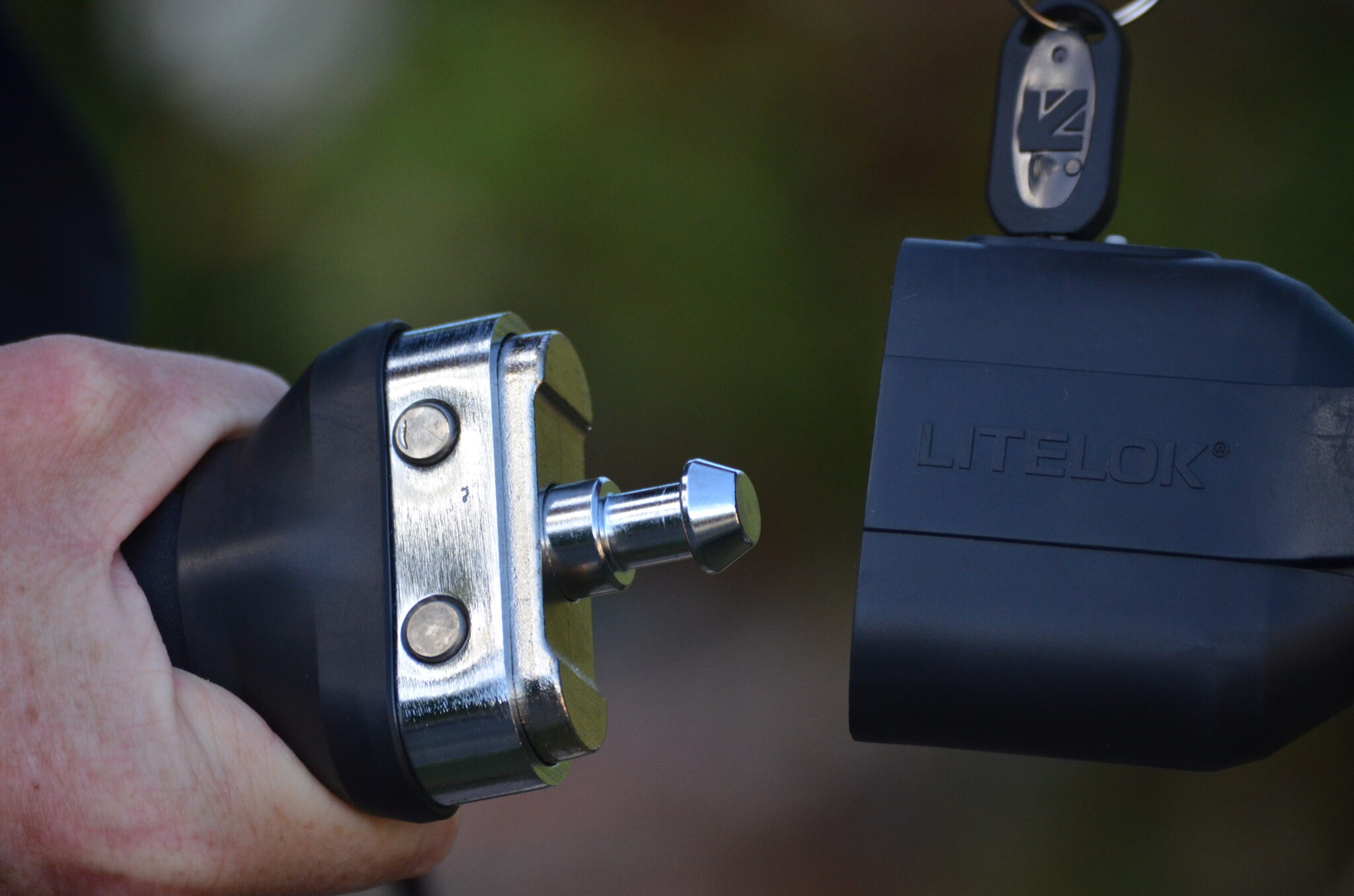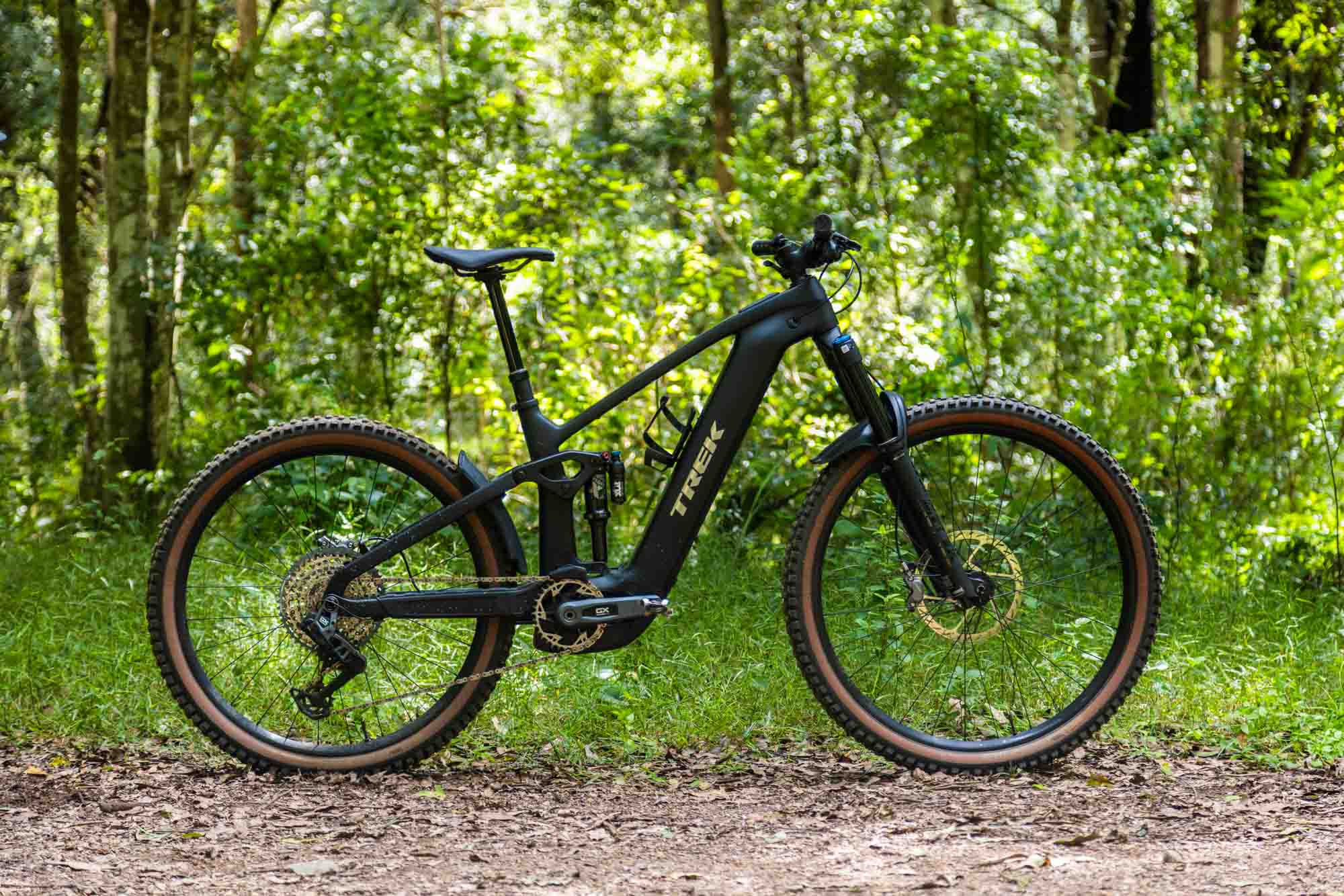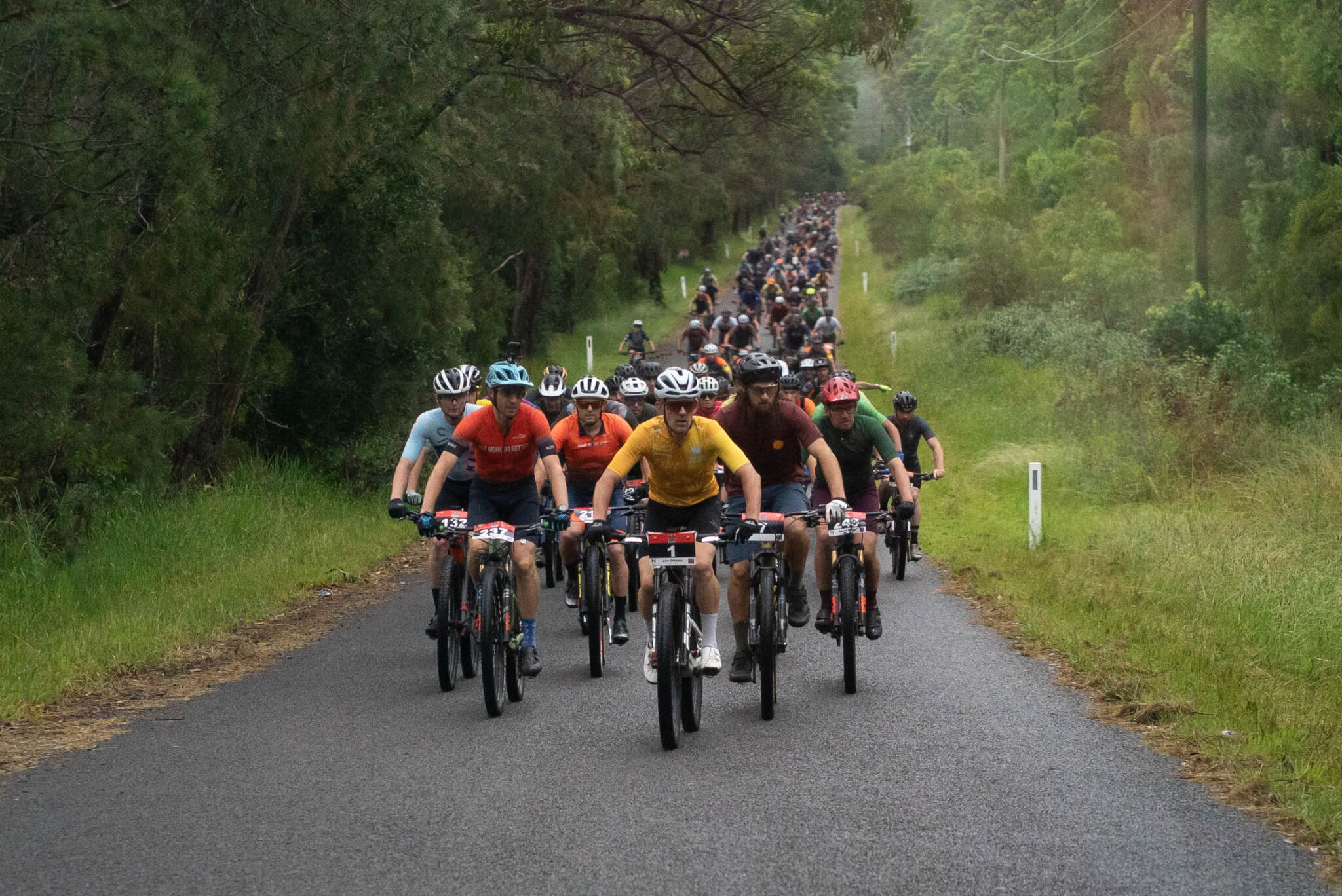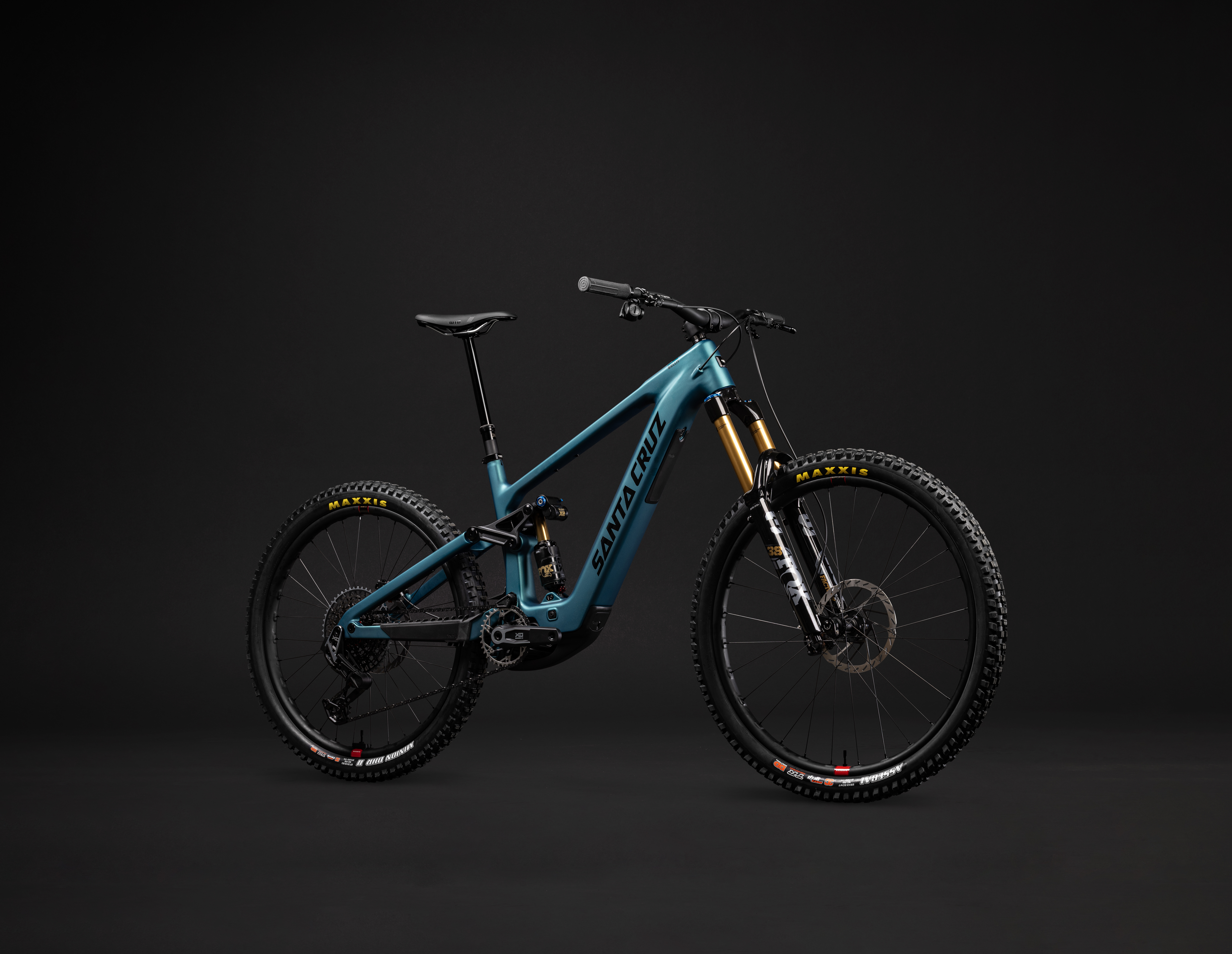Shimano release new Di2 group sets and eMTB motors
Shimano have just released new EP eMTB systems, along with Di2 e-bike group sets with automatic shifting and more!
The eMTB space is growing not just in number of users and bikes, but also with new technology and equipment. Shimano have just released three new group sets, a new motor system and an update to the Shimano EP8 eMTB system.
There's lots to go into, but the biggest details are the return of Di2 to Shimano's mountain bike groupsets, with two XT level eMTB specific group sets. The Di2 Linkglide group set is built around being totally robust, and the Di2 Deore XT 12-speed group set has the best shift performance and low weight with HyperGlide Plus.
Throw in automatic shifting (with manual over ride) and Free Shift (shifting without pedalling) and Shimano have really gone all out with work in their electronics! There's also a new EP6 motor to go with the updated EP8, all about working with the integration with the Di2 group sets.
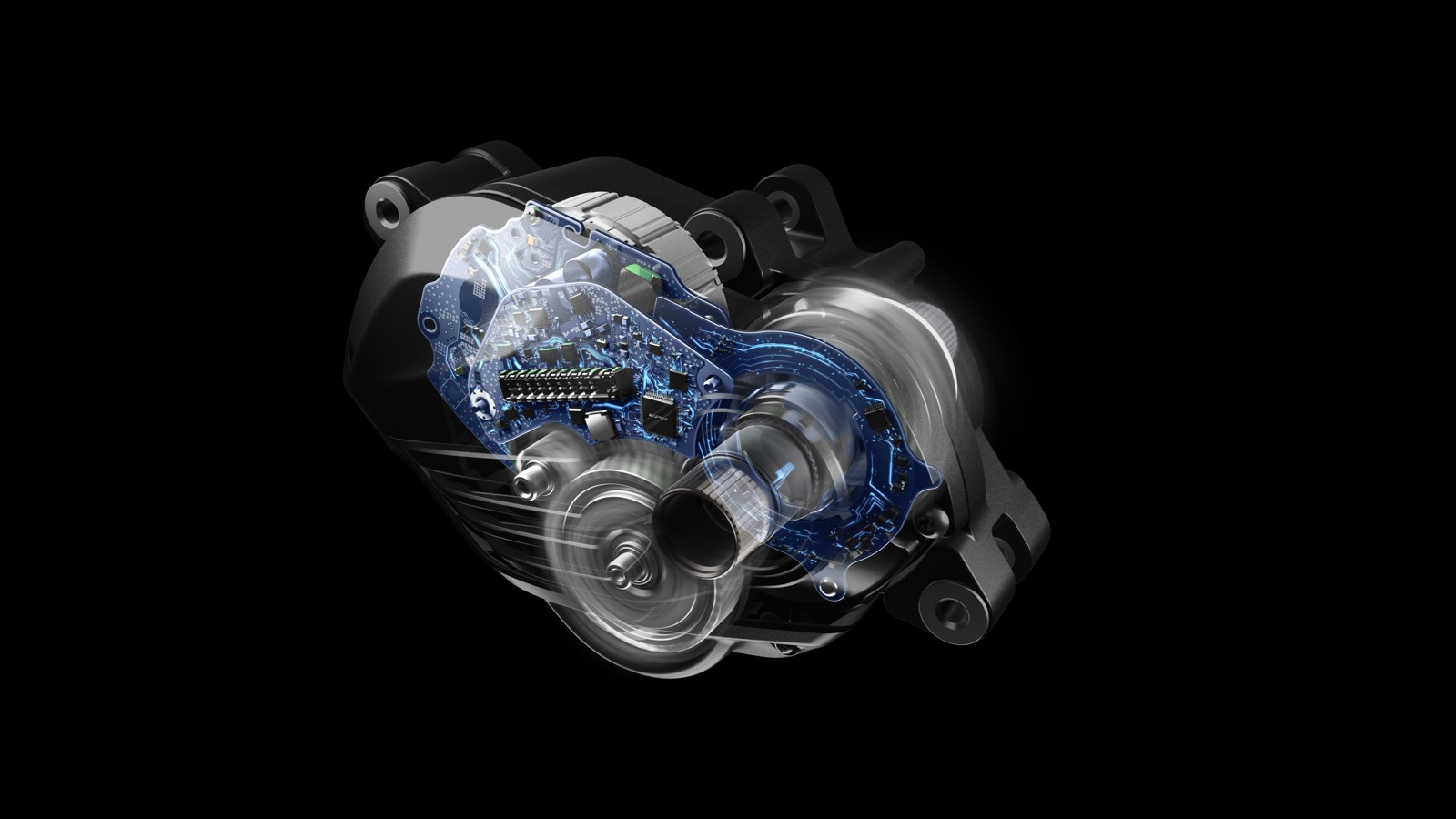
New motor systems from Shimano
Shimano have updated the EP8 system to go with the new Di2 group sets, and added the all-new EP6 system. There is also a new Cues Di2 group set mostly targeted at commuter bikes and mid-spec eMTBs. Both systems are designed in conjunction with the new drivetrains.
Shimano EP6 works with Free Shift and Auto Shift (more details later in this feature), and has the Fine Tune option in the E-tube app for power curve customisation.
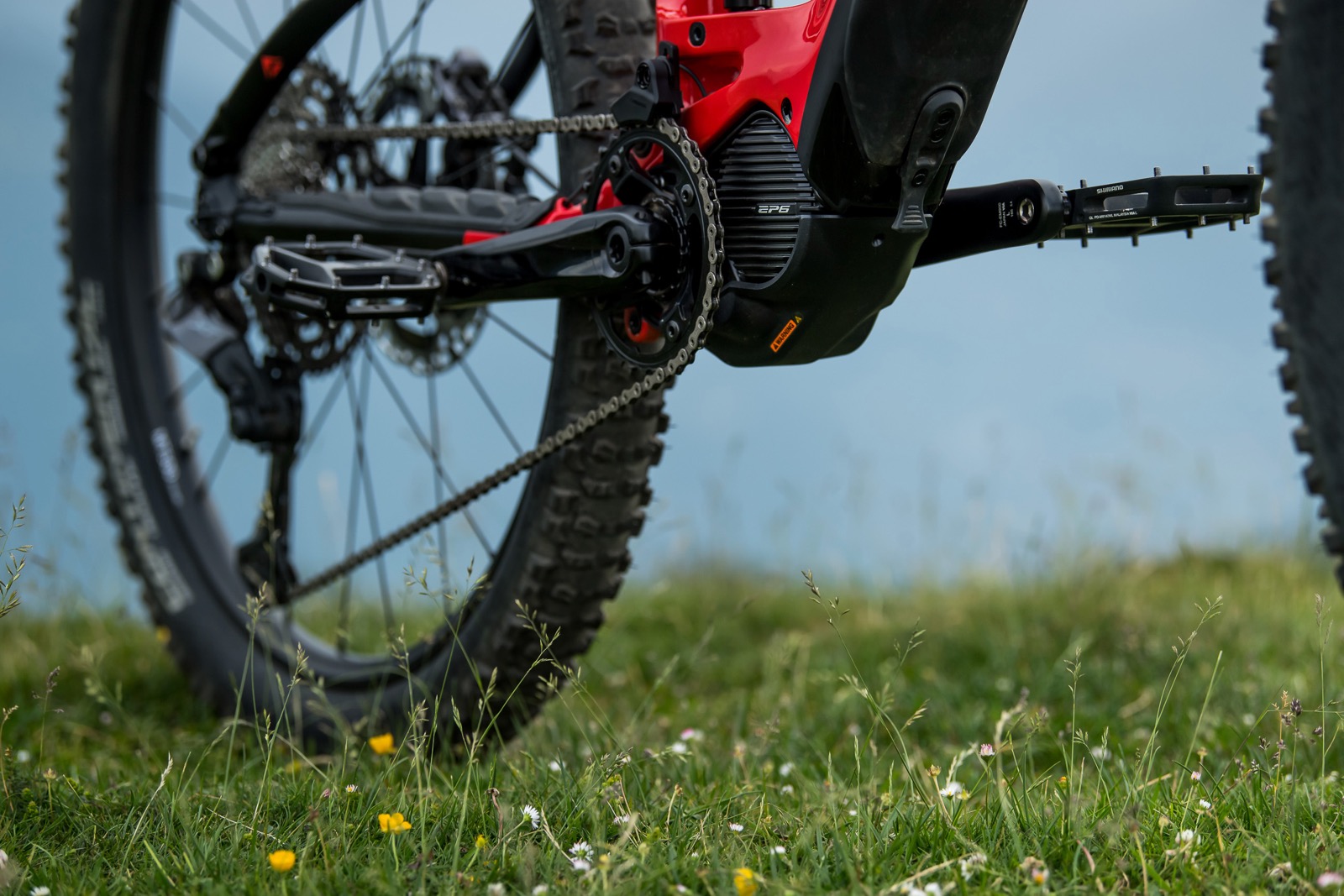
The motor weighs 3kg and has a maximum torque of 85Nm, so it's more than ready for the most demanding eMTB use. EP6 has 250W of continuous rated power.
Shimano EP801 reflects the updates made to the EP8 system. The big one here is being able to support the integration of Free Shift and Auto Shift, plus the Fine Tune mode for power curve customisation via E-Tube. It is lighter than EP6 by 300g and as such is the higher spec model.
Both motors are compatible with the three new eMTB group sets.
All about Shimano Free Shift
This is a big one. To actuate a shift on a derailleur equipped geared bike, you need to move the chain across the sprockets, with the derailleur reacting to your control by the shifter. Shift speed depends a lot on the quality of the chain and cassette, and often the shift is under load – especially on an eMTB. The chain needs to be moving, and that comes down to input by turning the cranks.
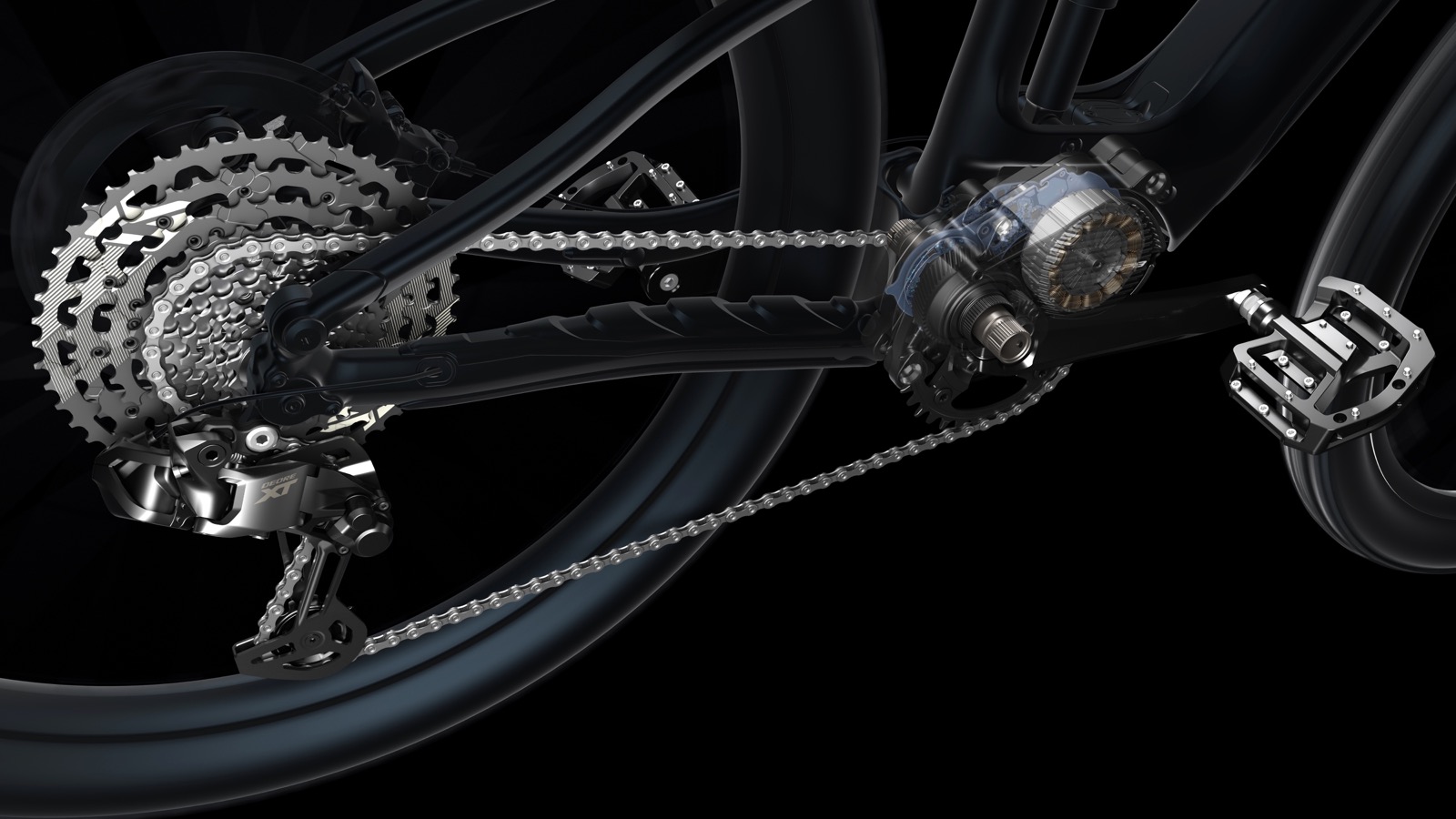
While pedal free shifting has been a big bonus of hub-based (or gearbox based) drivetrains, an eMTB provides the perfect platform for updated technology like this. There's already a drive unit, so why not have it actuate the shift by turning the chain ring, while you keep your pedals level through a rock garden, or your bike loaded in an off-camber corner?
You still actuate the shift by the shifter, but the Di2 system prompts the motor to engage to turn the chain ring to enact the shift. Simple. This won't work if you're stationary and have come to a stop in the hardest gear – your wheels need to be turning.
This will likely increase the life of your drivetrain components as well, as any shift will only be undertaken under load from the electronic system, without the additional rider input. It should appeal for riders getting into mountain biking, but also those who really want to push the abilities of their eMTBs on technical trails, where being in the right gear is paramount, but smooth pedal strokes between features is not always possible.
And what if your eMTB system could look after making the decisions about when to shift, while you're not pedalling, or even while you are pedalling?
Shimano Auto Shift
If we can have eMTB systems that offer a dynamic response to deliver the right support for a given cadence and pedalling input – why can't they change gears for us as well? That's exactly what Shimano's new Auto Shift does, with the optional for manual over ride.
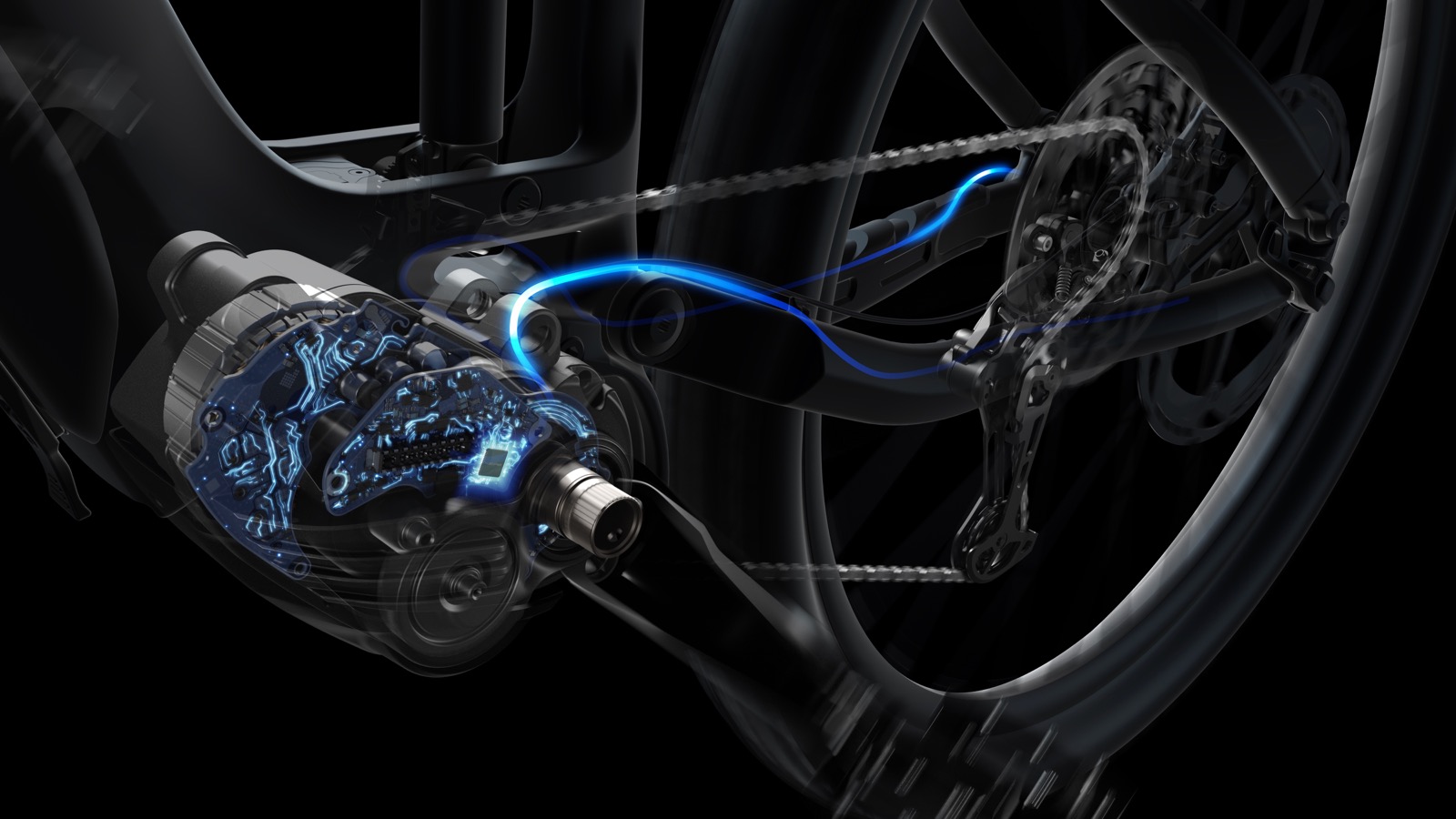
With Shimano's new Auto Shift with Manual Override – they can. In a way, this makes the eMTB experience, and perhaps the trail riding experience, as seamless as possible. Fitness used to be a pretty big hurdle for getting out and enjoying what mountain biking has to offer. The boom with eMTBs has helped remove that hurdle. But shifting can still catch some riders who are fresh to bikes out. When to shift, how to shift – any why to shift. Early eMTB issues saw riders using the modes on the system more than the gears, which really didn't allow riders to get the most out of the support on offer, their batteries, or their drivetrains.
Working in unison with the new Di2 LinkGlide 11-speed group set and Free Shift, the system does predictive shifting when coasting or pedalling to make sure you're in the right gear when you get on the gas again.
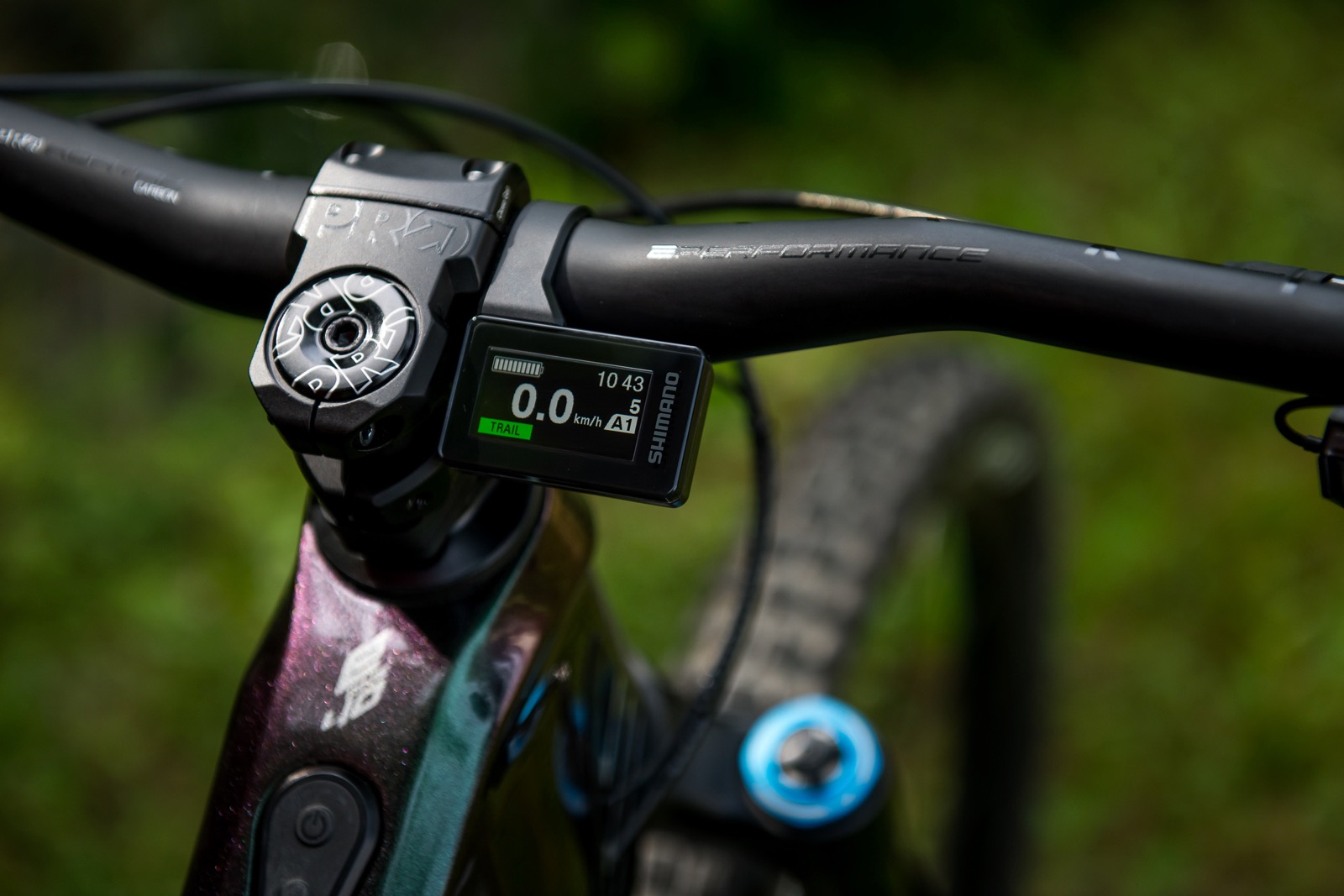
Importantly, it is worth being aware that the new Shimano Deore XT Di2 12-speed group set can do the Auto Shift when coasting, but not pedalling. LinkGlide 11-speed parts have been thoroughly reinforced for eMTB use, so we suspect that is why they have kept the loaded automatic shifting to this group set.
This isn't just shifting when your cadence gets too high or low, the system has an algorithm to take into account the speed you are going, your rate of acceleration and torque, and of course what gear you're already in.
There's two big user groups to benefit here. One is riders who are really discovering the joy of getting out into the hills and onto the trails. The other is the advanced rider, who is happy to have such a seamless system, and then still have the ability to enact the shifts themselves. Of course, you can also move the system to manual mode if it's not for you.
This technology workds hand in hand with the Free Shift, and the head unit shows 2 programme modes for Auto Shift so there will be customisation options via the E-tube app.
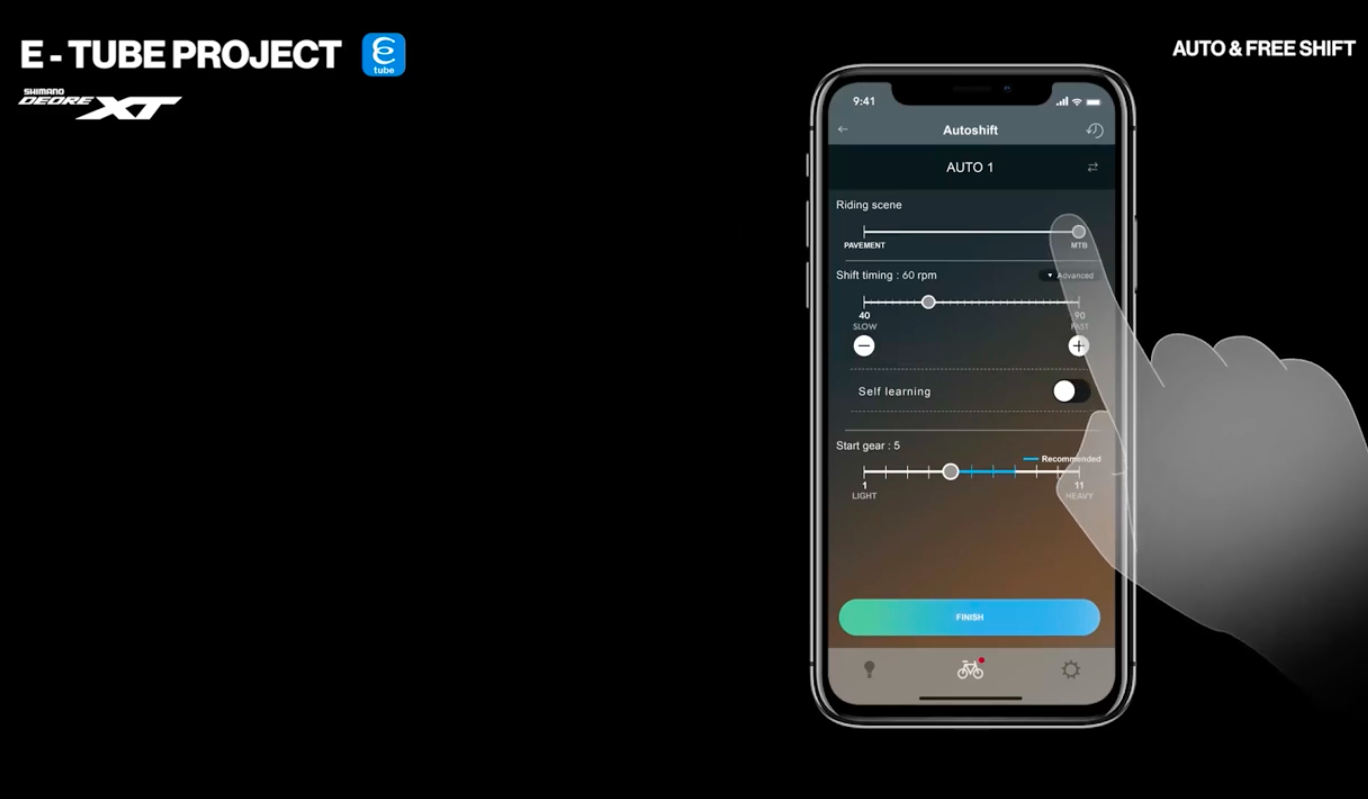
On E-tube you can set your riding scenario (ie, mountain and not pavement) on a sliding scale, but also the shift speed, in terms of what cadence range, from 40-90rpm. YOu can also set the range where the computer takes over, and Shimano show the suggested zone is in the middle of the cassette.
There's a toggle for self learning, and make no mistake – this is something we would like to play with!
Shimano Deore XT Di2 Linkglide
This group set is a major upgrade on the Linkglide 11-speed group set we reviewed last year – but the overall intention remains the same.
Linkglide aims to provide robust shifting and performance for e-bike riders, with a different chain and cassette interface for less chain bounce, and better shift security underload. The cassette was heavily reinforced, although that has had an update with a new CS-LG700 11-50t model that drops 200g to bring it to about 580g.
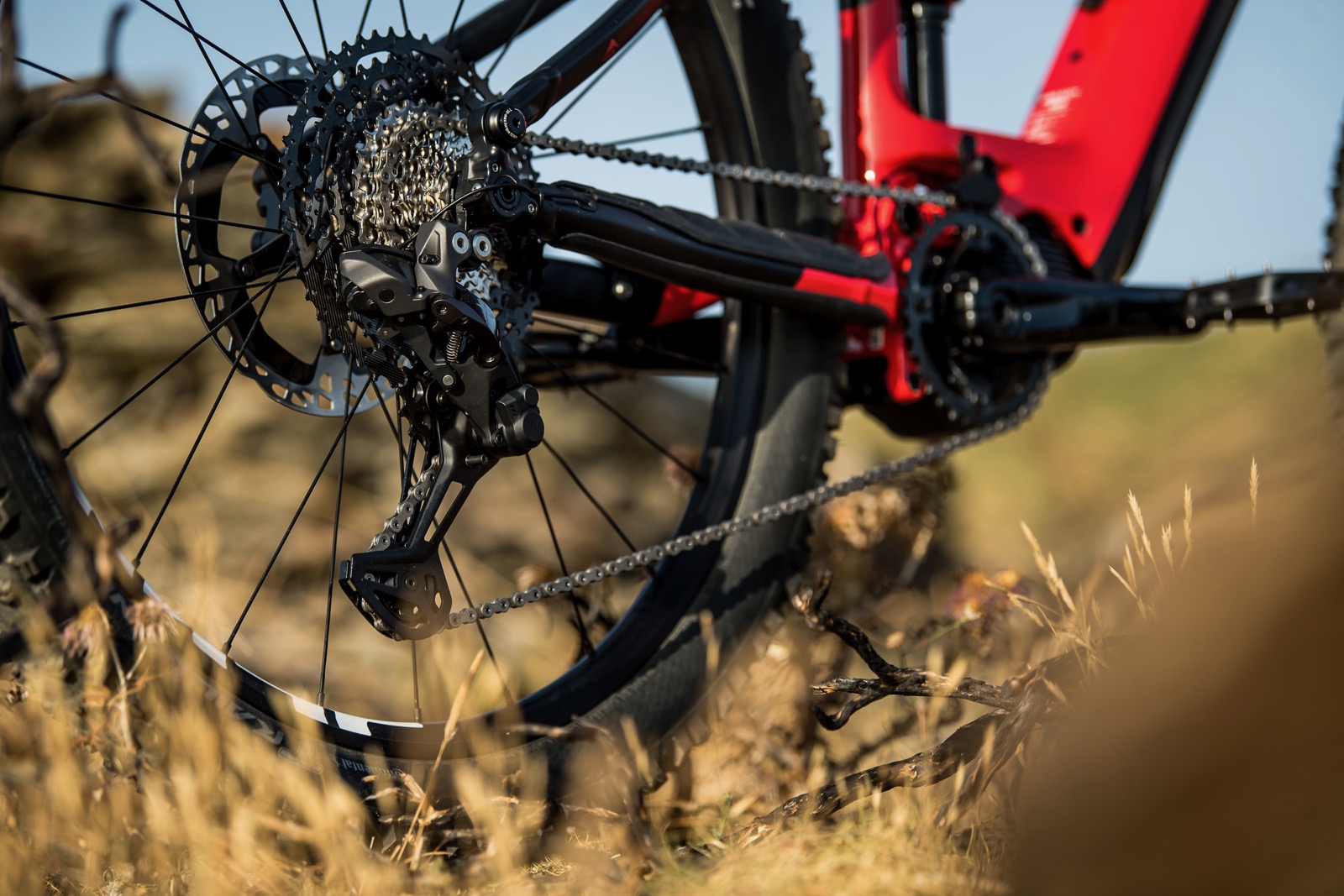
Shimano state that with the full compatability with the Free Shift and Auto Shift functions, Linkglide Di2 will allow riders to completely focus on the ride. So there's no uncertainty about being in the right gear when you need to get a pedal stroke in before a jump, or for that sharp uphill switchback.
As this is an electronic group set on an eMTB, it comes with that huge benefit for making getting out for a ride easier – a one stop shop for charging and power. The Di2 group runs off the power source for the bike. The overall demand on shifts is very low, so you can expect very little impact on the range you'll get from your bike.
We like this as the whole design of the new group set is for a seamless experience. So it makes sense to have just one power source and charging port.
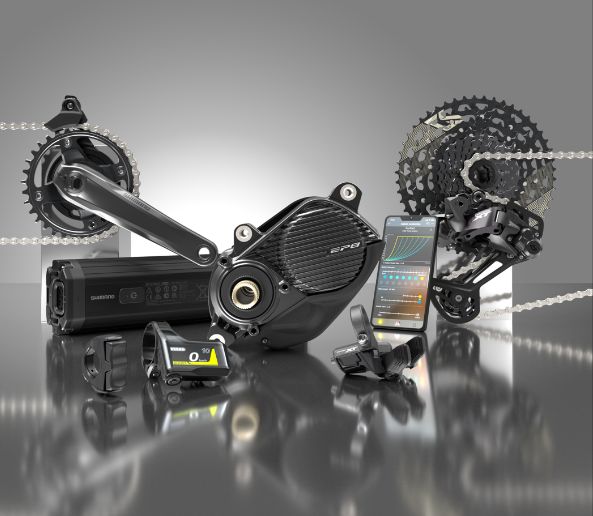
Shimano Deore XT Di2 HyperGlide+
Here it is, Shimano's Di2 in a 12-speed mountain bike group set! This group set is targeted at riders who want the best performing shift action from Shimano's HyperGlide+ cassette and chain profiling, along with smart Di2 integration. The Shimano Deore XT HYperGlide+ group set runs off your eMTB battery, and has a new shifter for the iSpec EV mount.
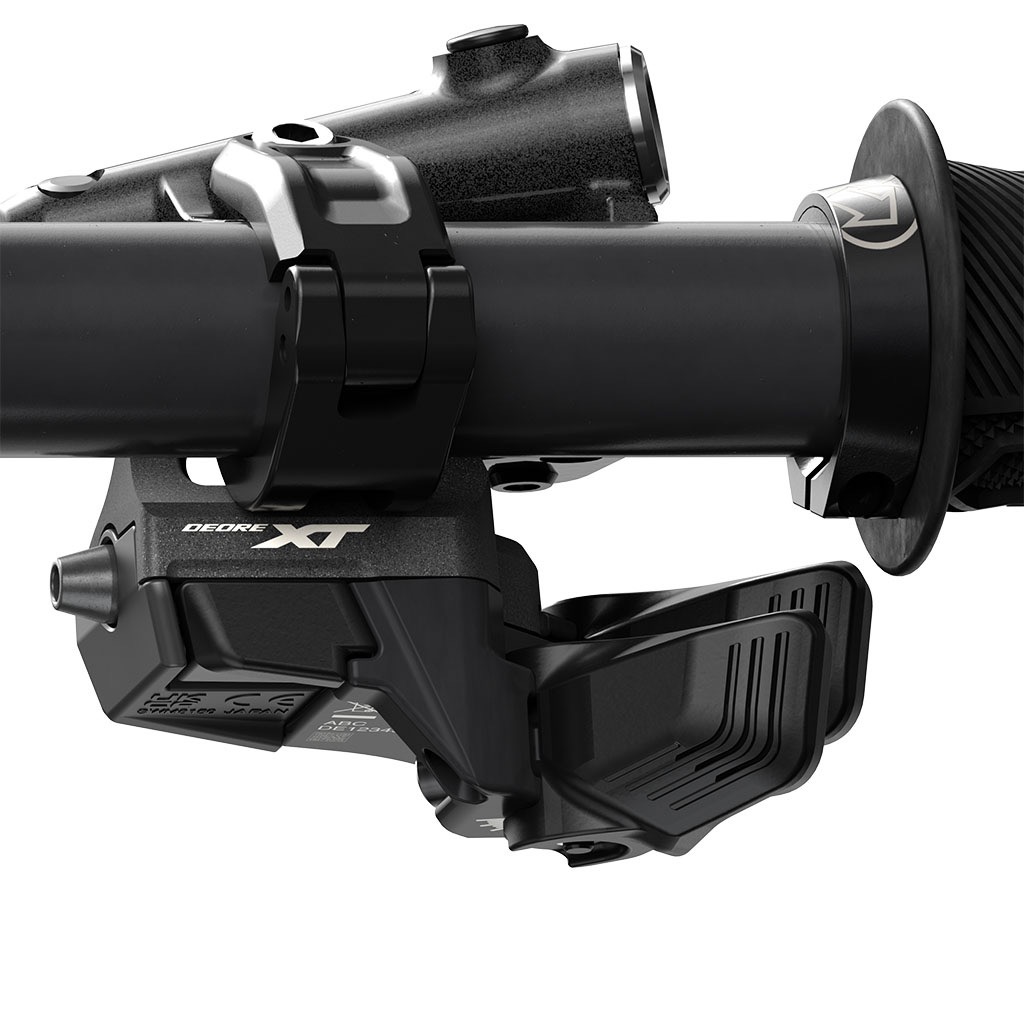
This 12-speed group set uses the 10-51t cassette, and has the Free Shift functionality to allow shifting when coasting, which is perfect for getting your exit gear spot in in sharp transitions and through corners. The HyperGlide+ chain and cassette have offer the best shifting under load, to both higher and lower gears, and along with the low group set weight this group set is targeted at eMTBers chasing high performance and lower weight on their group set.
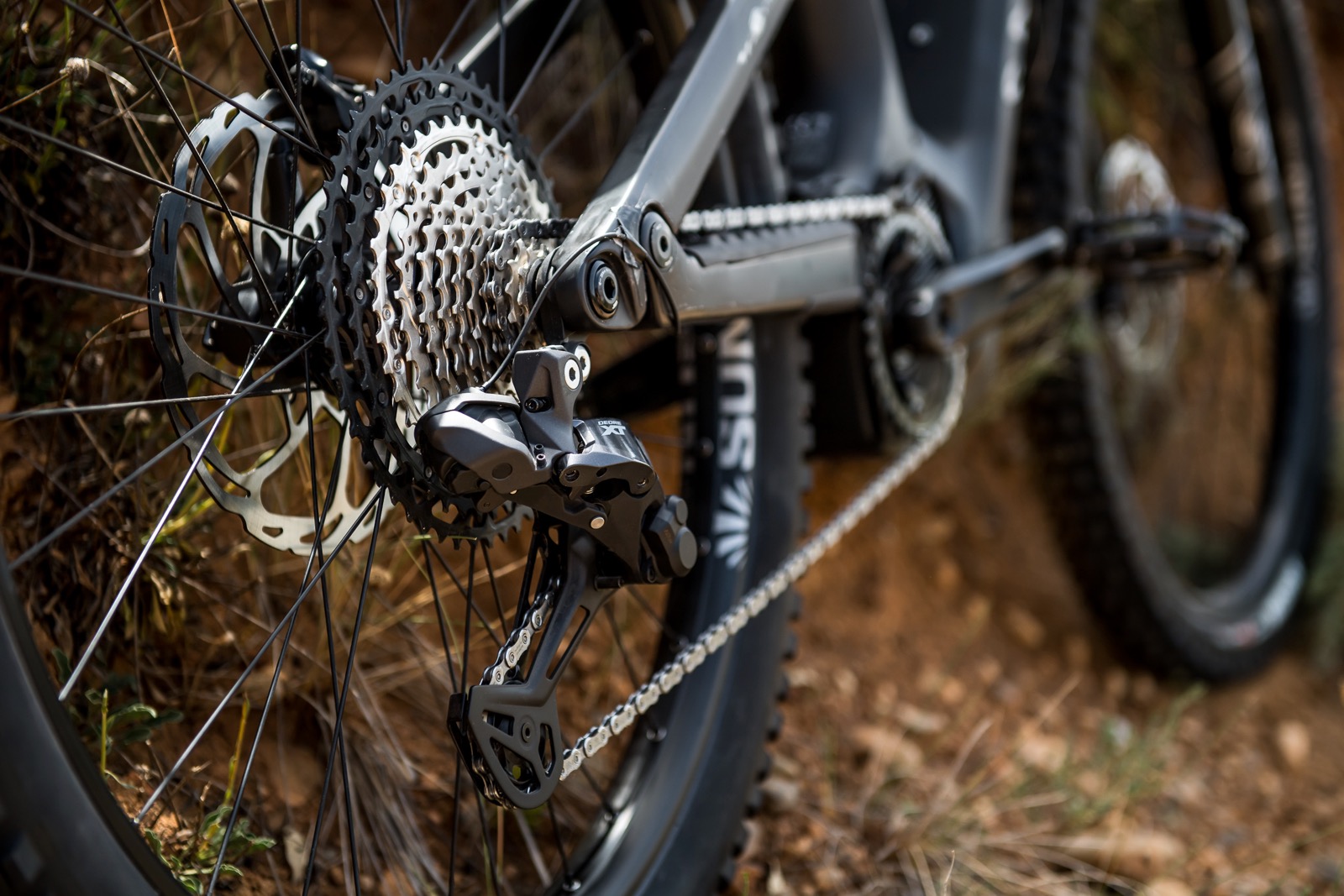
The 12-speed group set can do Auto Shift as well when coasting, but not when pedalling. Of course, being able to do it all on full manual is a choice as well.
Like the Deore XT Di2 LinkGlide group set, this 12-speed group set uses the power source from the e-bike, for simplified charging and end of ride routines.
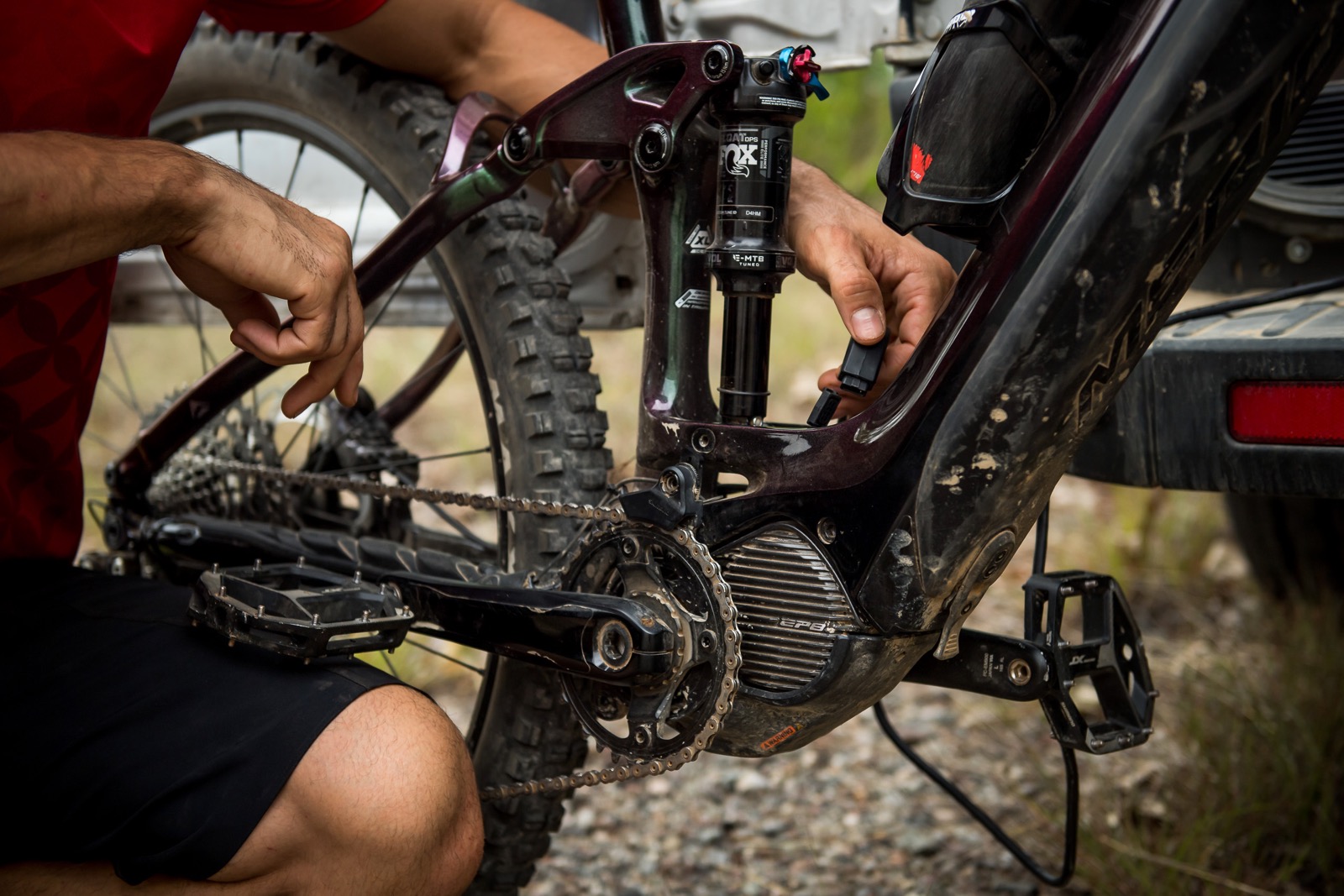
Shimano Cues Di2 Group Set
Shimano have also released the Cues Di2 group set. Therea re 10 and 11-speed Di2 group set options using LinkGlide shifting. It's compatible with both the Shimano EP801 and EP6 systems, and mostly targeted at urban use. But it has the full Free Shift and Auto Shift options (plus full manual) so there's a chance you will see this on mid-spec eMTBs.
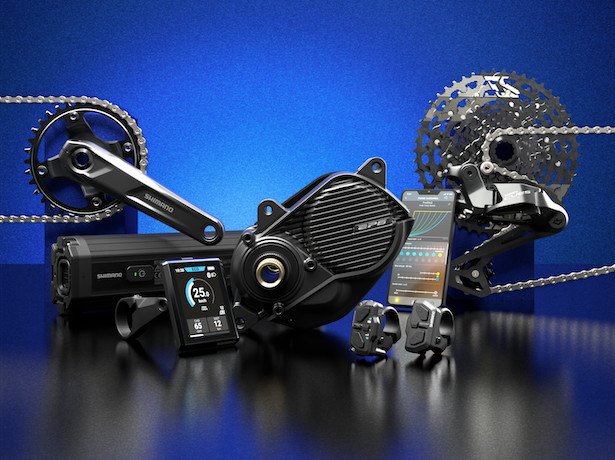
The 10-speed group has a 43t sprocket as a maximum low, but the 11-speed Cues Di2 group has 50t as the maximum – and this is the group you may see on a lot of mid-spec eMTBs, where the fully integrated shifting options of Free Shift and Auto Shift will play a big role.
When can we get it?
Shimano have said we're likely to see these products towards the back half of the year. And we expect them to be rolling changes to line ups. Did the 2022 model eMTB you were looking at have an EP8 system and XT group set? Maybe it has EP 801 and XT Di2 Linkglide, or XT Di2 HyperGlide+ now.
This is a logical expansion for Shimano. With SRAM's eMTB system spotted under wraps in the wild, and AXS equipped eMTBs coming with wired options for the rear derailleur to keep the end of ride process smoother, further e-integration is a big part of how eMTB tech will continue to evolve.
And a big part of that is how the equipment is used, and how much input we can opt out of. A lot of riders may think that they just won't want the system planning and actuating their gear changes. But it really could open up a lot of possibilities for riding more demanding terrain, while also serving riders who just want to immerse themselves in the ride, and let the drivetrain look after itself.
The proof will be on the dirt, and we're looking forward to trying it out.
